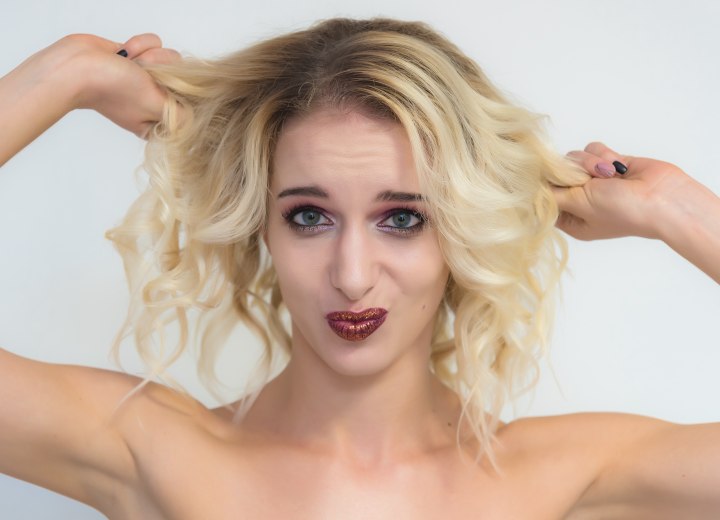Permanent Solution Kills the Hair

A: With regard to your first question, the answer is absolutely, unequivocally, NO. And as logical argument for anyone who might wish to cling to such a myth, let me offer this: since the hair on the scalp (once it emerges above the skin’s surface) is not living tissue (otherwise haircuts would be horrendously painful) how can it “die”?
Ok. Now that we’ve made that point, let’s explain what actually happens during a perm so that everyone can feel more assured that they’re not doing something horrible to their hair.
First you have to understand that the hair is comprised of long chains of proteins that are connected by side bonds. There are two types of side bonds: physical and chemical. Physical side bonds make up about two-thirds of the bonds in the hair but are weaker and only account for half the hair strength and elasticity. Chemical side bonds represent only one-third of the bonds, but being stronger, make up half the strength and elasticity of the hair.
The physical side bonds are two-fold, consisting of salt bonds and hydrogen bonds. These can be broken by applying heat and/or moisture to the hair while wrapping the hair around a tool to reshape the wave pattern. When the hair dries (or cools) once more, the side bonds reform in the new configuration and the curl is created. This is how curling irons and wet roller sets work to curl the hair.
Permanent waves work on the chemical side bonds, which are called disulfide bonds. The perm solution breaks these disulfide bonds and allows the hair to take on the shape created by the size of the tool being used. After the hair is processed with perm solution and the solution rinsed away, the hair is treated with a neutralizer which reforms the disulfide bonds, locking in the new curl shape.
Permanent wave solution is usually very alkaline and causes the hair’s cuticle to swell and expand. This makes the hair more porous, and susceptible to damage. You should always follow your stylist’s instructions in caring for your hair after a perm service. It’s been my experience that most of the negative results from perm services performed on healthy hair, come as a result of clients who disregard the aftercare instructions.
It is possible that the individual who claimed that perms kill the hair simply experienced a perm that was improperly applied, applied to hair that was in poor condition or did not properly care for the permed hair after service and suffered damage to the hair as a result.
©Hairfinder.com
See also:
Hair myths
Roller styling
Perms and perming hair
The scientific processes that occur during perming and relaxing hair